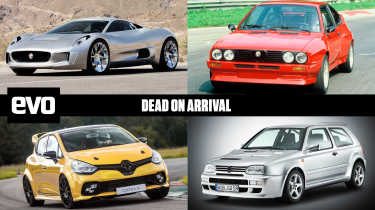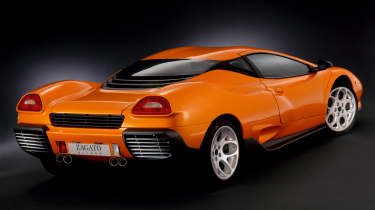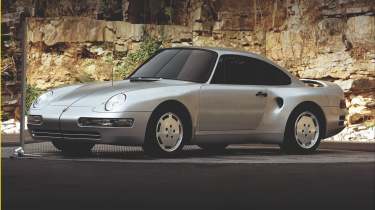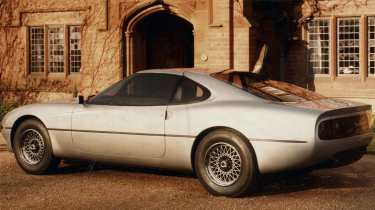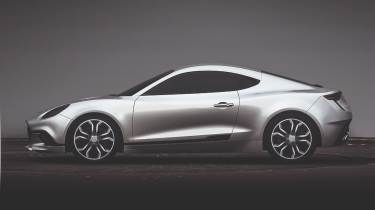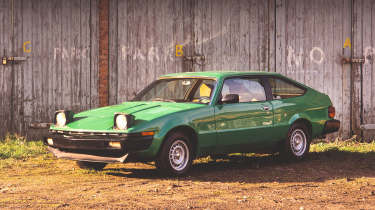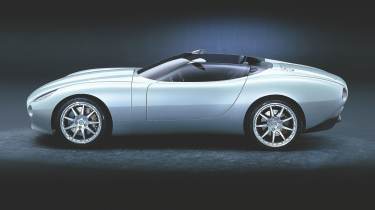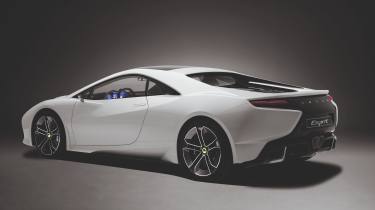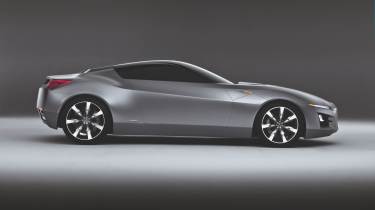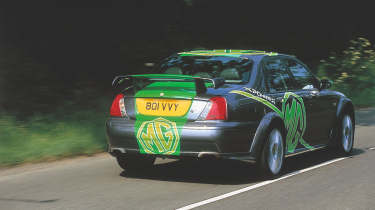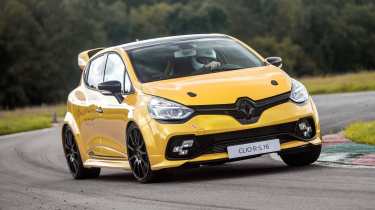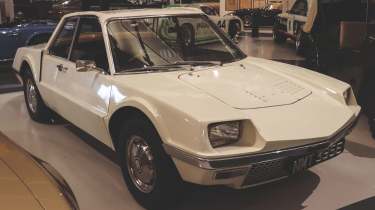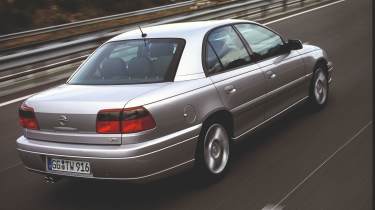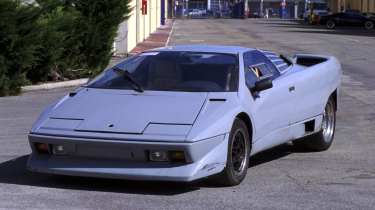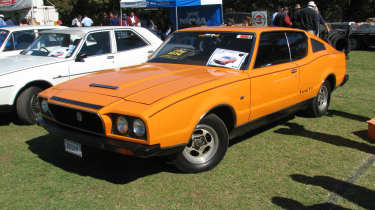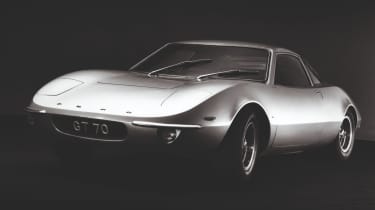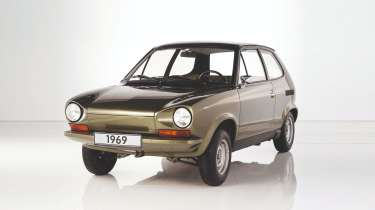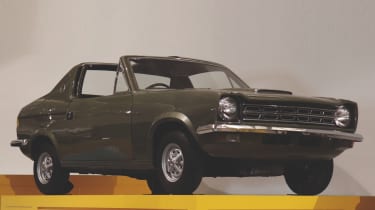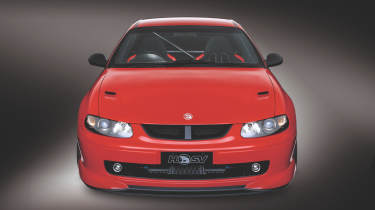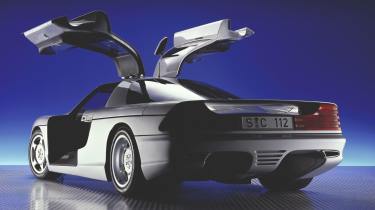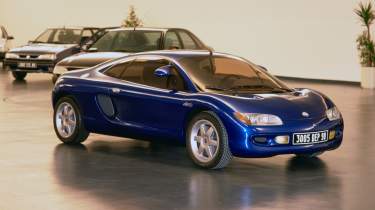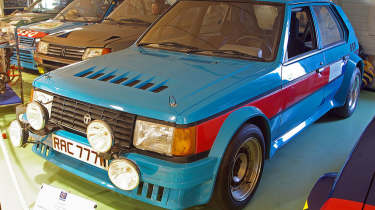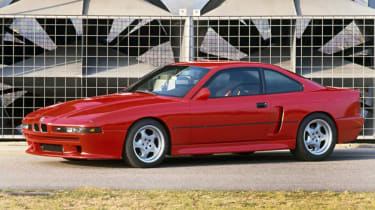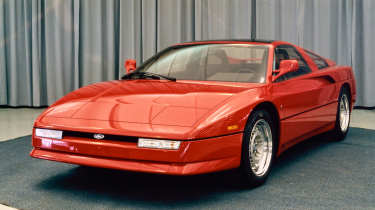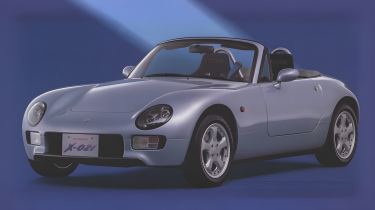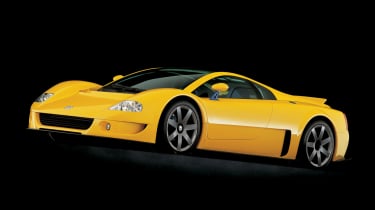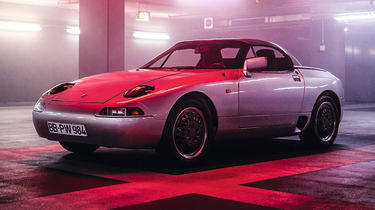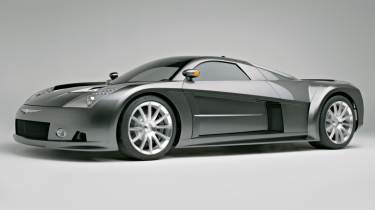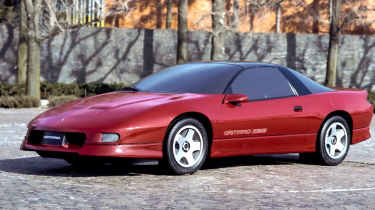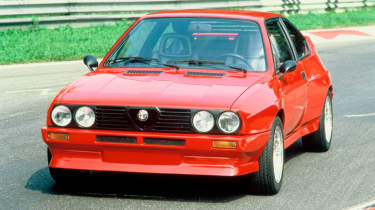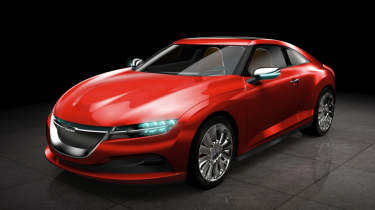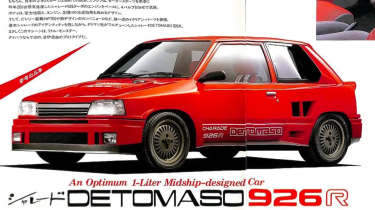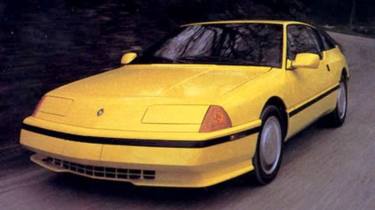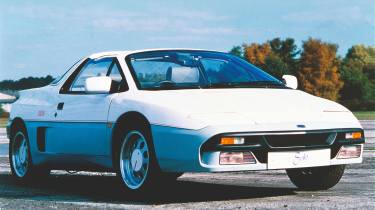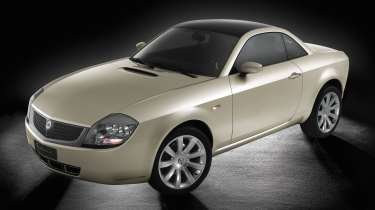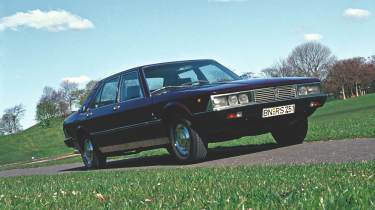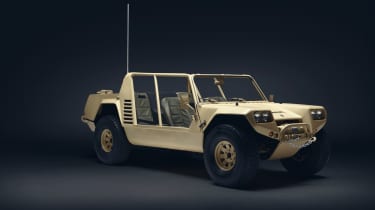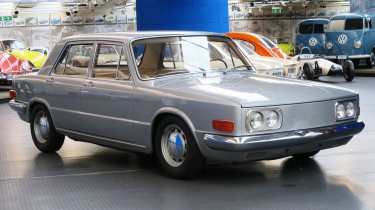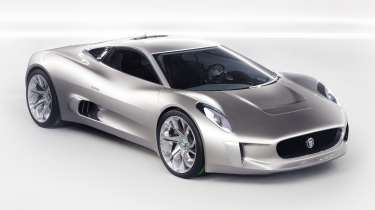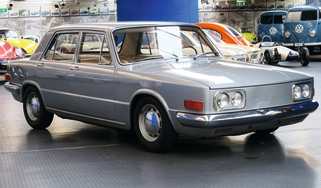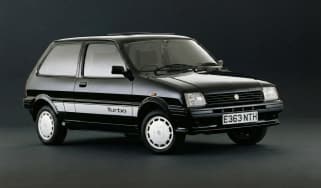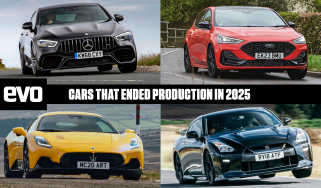Dead on arrival: 44 cars that failed before they launched
Sometimes cars make it all the way to production possibility before being snuffed out at the last minute. Here are 44 of the most memorable
How many cars have you read about that could have been great but never saw the light of day? We’re not talking concepts either but models that were all but production-ready, only to disappear without a trace, occasionally in mysterious circumstances.
evo’s Richard Porter was so intrigued he went in search of the stories behind the cars that never quite made it, through financial insolvency, production struggles, or mission creep leading to their demise. So if you ever wanted to know what happened to the Alpine 710 or the Volkswagen W12 Syncro you’ve come to the right place.
Lamborghini Canto
History has shown that Volkswagen’s Ferdinand Piëch tended to have the last word on decisions within the Volkswagen Group, both for better and worse. Without him, Lamborghini might look very different today than it does, given it was he who nixed the Canto: the Diablo-replacing supercar that in the late 1990s looked like a dead-cert, with a planned unveiling at the 1999 Geneva motor show. What we got instead was 2001’s Murciélago, which set the more aggressive tone for every Lamborghini to follow.
> Read the full story on the Lamborghini Canto here
Porsche 965
You’re not looking at a Porsche 959, this is actually the 965, a proposed replacement for the 911 Turbo as a standalone range-topper. Developed alongside the 964 generation 911, problems quickly began to surface, such as the 3.5-litre engine failing to get close to the desired 365bhp output. Porsche considered other engines, including the V8 proposed for the similarly doomed 989 saloon, but in the end, the financial crash of the late 1980s and tanking sales led new development boss Ulrich Bez to kill it off.
> Read the full story on the Porsche 965 here
Jaguar XJ41
The XJ41 is special, even if it never made production: it was the last car to be signed off by company founder William Lyons. Sadly, shortly after his death, the car entered development hell. Jaguar didn’t have the budget to work on both the XJ41 and the important XJ40 saloon alongside each other. Delays to the sports car spurred Jag to pack the proposed car with technology to ensure it could still compete in the late 1980s, and when Ford saw the project after acquiring Jaguar in 1989, promptly binned it – though thanks to Tom Walkinshaw of TWR, the XJ41’s bones lived on in the Aston Martin DB7.
> Read the full story on the Jaguar XJ41 here
Caterham C120
It’s difficult to tell the relationship at a glance, but the Caterham C120 was the other half of the project that became the Alpine A110. Given how brilliant the Alpine became, it’s a real shame that the Caterham never saw the light of day. While the project started with a bang in 2014, Caterham quickly discovered it could no longer raise the funds required to progress further. Renault covered the British brand’s existing costs and went it alone with the A110, which launched in 2017.
> Read the full story on the Caterham C120 here
Triumph Lynx
If the Triumph Lynx looks a little like a TR7 without the weird bit at the back, that’s because it is. Well, actually a TR8, as the Lynx was Triumph’s proposal to replace the Stag and fight the Ford Capri. Soon after the TR7’s troubled debut, the Lynx also looked necessary to fill a production shortfall at the Speke factory in Merseyside. But ultimately, response from clinics to the Lynx’s own slightly iffy styling, and the usual British car industry issue of not actually having much money, saw the project closed in 1979.
> Read the full story on the Triumph Lynx here
Jaguar F-Type (2000)
You’re right, the F-Type name did eventually make it to the road. But not before the aforementioned Jaguar XJ41 failed to materialise, and the same fate befell 2000’s more overtly-named F-Type concept. The success of Porsche’s Boxster saw the front-engined concept morph into a mid-engined one, which might have shared parts with a similar mid-engined car in development at Aston Martin – had the two brands not wanted different engine layouts (Jag a transverse V6, Aston a longitudinal V8), and had Ulrich Bez at Aston not then diverted the company towards the route eventually ending in the V8 Vantage. Jaguar then diverted its attention to diesel engines, and Ford killed off the second Jaguar sports car under its tenure in 2002.
> Read the full story on the 2000 Jaguar F-Type here
Lotus Esprit
The proposed 2010 revival of the Lotus Esprit is difficult to remember with clarity, if for no other reason than it being one of five all-new cars announced at that year’s Paris Motor Show by Dany Bahar, the former Ferrari branding boss who was later dismissed, albeit for other reasons, in 2012. The cars themselves, Esprit included, weren’t unlikeable, even if they look a little dull through the lens of 2025, but Lotus really did make the effort, even prototyping a Lotus-designed V8 engine. The Esprit project survived until 2014 when Jean-Marc Gales canned it, while the show car is believed to still be at Hethel as a kind of ominous reminder of how things can go wrong.
> Read the full story on the 2010 Lotus Esprit here
Yamaha OX99-11
Despite some intriguing concepts, Yamaha has never quite got around to building a car to go with its motorcycles. Involvement in F1 led it to develop a supercar to show off its engine-building abilities – an 1150kg, 400bhp sports car more closely related to F1 than any previous supercar could claim, given its OX99 V12 was a detuned version of the F1 motor. Due to be built by Brabham, the OX99-11 project began to fall apart when Yamaha fell out with prototyping and development firm IAD, and the Japanese economic bubble collapsed – though three prototypes survive.
> Read the full story on the Yamaha OX99-11 here
Honda NSX V10
The second-generation Honda NSX had one of the most protracted development schedules we can remember, with an announcement in 2005, the first appearance of a concept in 2012, and launch only in 2016. Part of the problem is that the car announced wasn’t the car Honda released – the one announced in 2005 and promised for 2010 was due to be a front-engined super-GT with a 5.5-litre V10. Racing-spec prototypes were a regular sight at the Nürburgring, but 2008’s global financial crisis put paid to both the car and Honda’s F1 programme. The racing prototypes didn’t go to waste though, being repurposed into the V8-powered HSV-010 used in Japan’s Super GT series.
> Read the full story on the 2008 V10 Honda NSX here
MG ZT XPower 385
It’s genuinely impressive how much MG Rover achieved on just a dribble of cash before its 2005 demise, especially with the MG brand itself. Three genuinely good tin-top road cars, a refreshed MGF in the form of the TF, and the XPower SV sports car. Plus, the heavily re-engineered, 260bhp Mustang V8-powered ZT V8. A supercharged, wide-arched version, the XPower 385 was planned too, but ultimately it was a project too far for the terminally underfunded team, especially given getting even the regular ZT V8 to market had been a bit of a nightmare.
> Read the full story on the MG ZT XPower 385 here
Renault Clio RS16
Renault turned the relatively unloved turbocharged Clio 200 of 2012 into the more likeable Clio 220 Trophy in 2016, but we missed out on one that could have been an all-time great: the Clio RS16. Presented in driveable form in 2016, it used the 217bhp 2-litre engine and manual gearbox from the contemporary Mégane 275 Trophy-R, a 60mm wider track with wide arches to cover it, and bits from all manner of Renault group products, from a rallying rear axle to Kangoo subframe parts. evo drove it, and predictably it was enormous fun, but the Dieppe production facility where it might have been built was reading for the Alpine A110 – a fair compromise, it has to be said.
> Read the full story on the Renault Clio RS16 here
Rover P6BS/P9
Rover’s re-engineering of a discarded Buick V8 engine completely energised the company in the mid-1960s, turning both the stately P5 and modernist P6 into Jaguar-baiting sports saloons. In 1966 it set Spen King the task of designing an actual V8-powered sports car to go with them, and the mid-engined, chain-drive, three-seat P6BS (for P6-based, Buick-engined, Sports car) was the result. Rover management still hadn’t decided if they actually wanted to green-light it for production though, and while it was developed into the P9 by 1969, the creation of British Leyland in 1968 – of which Jaguar was a part – saw it doomed by both low budgets and internal competition.
> Read the full story on the Rover P6/BS here
Opel Omega V8
From the Lotus Carlton to the Holden Commodore, GM’s international brands were no strangers to brawny rear-drive saloons, and when the Opel Omega debuted in 1994, the German arm of GM considered giving things another go. Slipping a 5.7-litre LS1 V8 from the Corvette into the handsome Omega body, it created one of the most subtle sports saloons of the period, making 311bhp but looking little different from the diesel-engined version parked in company car parks across Europe. A concept appeared in 1999 and production was confirmed in 2000, before being cancelled almost immediately. Sustained, Autobahn-style high-speed running revealed weaknesses in the usually stout LS engine, and without the budget for re-engineering, cancelling the project was the only sensible course of action.
> Read the full story on the Opel Omega V8 here
Lamborghini P140
Between Urraco and Jalpa, Lamborghini had an 18-year run of V8-powered entry-level models to sit underneath its flagship V12s. Before the Jalpa disappeared, Lamborghini started work on a new car that would go one, or rather two better than its predecessors, thanks to a new V10 engine. The company drafted in Marcello Gandini to pen the shape – which had more than a hint of his future Diablo. But with owner Chrysler not sparing the cash, and the factory working on the Diablo itself, just three prototypes were created before the project was canned. The bare bones did return as the ItalDesign Calà in 1995, but the junior Lambo and that V10 project ultimately returned, under Audi, with 2003’s Gallardo.
> Read the full story on the Lamborghini P140 here
Leyland Force 7
Not the prettiest car that never saw the light of day, it has to be said, but Leyland’s planned version of the Australia-focused P76 had all the Aussie muscle car cues: a big 4.4-litre version of the Rover V8, an optional performance pack with a limited-slip diff and lower gearing, and a practical hatchback for carrying whatever Leyland thought Aussies regularly hauled about. The timing wasn’t great though: the oil crisis was underway, and like everywhere else in the world, Leyland’s sales were suffering from a poor reputation for quality. The Australian factory managed to crank out 56 examples before Leyland pulled the plug on it and the P76, and ten still exist today.
> Read the full story on the Leyland Force 7 here
Ford GT70
Ford would need something more extreme than the Escort to compete in 1970s rallying. Turning to Len Bailey, who’d been involved in the Le Mans-winning GT40 project, Ford Motorsport began work on a mid-engined car which debuted at the Brussels motor show in 1971, named GT70 – after the year it was conceived. Powered by a 2.6-litre Capri V6 and built almost entirely from Ford’s parts bin, the car was promising, but early trials in the French rally championship went badly, even after a BDA four-cylinder was installed. Ironically, the BDA-powered Escort was still quicker, and the GT70 didn’t make sense as a road car, so Ford called things off in 1973.
> Read the full story on the Ford GT70 here
Volkswagen EA 266
Replacing an icon isn’t easy. BL couldn’t do it with the Mini Metro, Porsche failed with the 928, and the Beetle was so successful that even after the Golf arrived, production continued into the early 2000s. But the Golf wasn’t VW’s first attempt to prove it could build more than just an aircooled, rear-engined car. A similar effort in 1966 yielded the Porsche-developed AE 266, now with water-cooled inline engines and a mid-engined layout, with a hatchback luggage area. VW gave it the go-ahead in 1969, Porsche built 50 prototypes, and then everyone quickly realised it wasn’t actually a very good car, with tricky handling, a noisy cabin, and it was a maintenance nightmare. In 1971 new boss Rudolf Leiding quickly closed the project, had the prototypes crushed, and instructed engineers to concentrate on project EA 337 instead: the Golf.
> Read the full story on the VW EA 266 here
Mini-based sports car
A near-uncountable number of companies over the years have put Mini mechanicals in something sports-car shaped, but one which never got around to it was BMC itself. It wasn’t for the want of trying though, first with the MG-developed ADO 34, and then a Pininfarina-built roadster which looked good but didn’t sit well with Alec Issigonis, and was canned in 1964. In 1970, BL considered a Mini-based replacement for the Midget, this time as a neat Michelotti-built targa-topped car, the ADO 70. On returning to the UK, designer Paul Hughes wasn’t keen, the prototype had leaked in the rain, and it was quickly abandoned. Both ADO 34 and ADO 70 today live in the British Motor Museum.
> Read the full story on the Mini based sports cars here
HSV HRT 427
We always liked the Holden (or as it was here, Vauxhall) Monaro at evo, and had the 7-litre, 560 horsepower, dry-sumped HSV HRT 427 made it to the UK, we’d probably have liked that one too. It was lighter than standard and adapted for high-performance use, with a planned 50-car production run, but the projected price of 215,000 AUD (around £85k) would have lost Holden money on every one. Its racing equivalent still got a chance to compete, but only a pair of 427 road cars made it out, a show car retained by Holden, and a running prototype which today makes occasional auction appearances for high six-figure sums.
> Read the full story on the Holden HRT 427 here
Mercedes-Benz C112
Mercedes’ follow-up to its C111 concepts of the 1970s was impossibly advanced upon its 1991 Frankfurt motor show debut. Active suspension, active aerodynamics – including quick-acting spoilers to increase downforce during a loss of grip – radar cruise control, and tyre pressure monitoring. The only thing that sounds a little old-school is the 6-litre V12 (attached to a manual gearbox), but even that met global emissions standards, and the car was designed to meet safety requirements too. Ultimately what killed the spectacular supercar was the recession of the early 90s, but its V12 at least made it into the Pagani Zonda, and all of its tech is now familiar too.
> Read the full story on the Mercedes C112 here
Alpine A710
Had the Alpine A710 succeeded in reaching production, there’d be another part to the brand’s heritage between the A610 and today’s A110, but we’d also be missing one of Renault Sport’s most distinctive road cars. In development from 1989, the A710 was mid-engined and used the 150-horse 2-litre F7R engine from the Clio Williams, in a curvy body draped over an aluminium chassis. A lack of power steering, electric windows, air-con and other amenities didn’t go down well with the marketing department though, and the A710 met its end – at least until Renault chopped off the roof and windscreen too and rebodied it as the Sport Spider, which arrived in 1996 and was built at Alpine’s Dieppe factory.
> Read the full story on the Alpine A710 here
Talbot Horizon Lotus
This follow-up to the Talbot Sunbeam Lotus might look outwardly similar, unsurprising given its provenance, but with visions of the Renault 5 Turbo in their eyes, Talbot’s rallying engineers turned the boxy family car body into a mid-engined monster. The old Sunbeam Lotus engine was installed longitudinally between the front seats and rear wheels and with a turbocharger made 300bhp. However, like so many early-1980s rally prototypes, Audi’s Quattro took the wind from Talbot’s sails, showing that four-wheel drive was now basically essential to win. Development stalled, though partner Peugeot had the answer, and a WRC-winning one too, with the mid-engined, four-wheel drive 205 T16.
> Read the full story on the Talbot Horizon Lotus here
BMW M8 (1990)
You’re right, we did eventually get a BMW M8 (best known for towering over the rest of the grid in FIA GT3 competition), but this 1990 model never quite made it. 1989’s 8-Series was more grand tourer than sports car, but BMW Motorsport set about changing that, cutting weight from nearly 1.8 tonnes down to 1450kg, giving it a broader track, and installing a 630bhp, 6.1-litre V12. Driveability, packaging, and potential pricing issues put paid to the car, but it did spawn the 850CSi of 1993, which featured a proper M engine – the 5.6-litre S70 – and was manufactured by BMW Motorsport GmbH.
> Read the full story on the 1990 BMW M8 here
MG PR2
The MGF could have been very different had Rover’s management selected project PR2 rather than PR3 in the early 1990s. While the latter was a cleverly-designed mid-engined car with parts commonality with the brand’s front-engined models, the former used the front-engined, rear-drive chassis of the Reliant Scimitar and 3.9-litre Rover V8 power. The combination was one of the best ways the company could find to keep costs down on its upcoming sports car, but the PR2’s rather rudimentary underpinnings meant US success was unlikely, and Rover decided Europeans would prefer a nimbler mid-engined model - the eventual MGF.
> Read the full story on the MG PR2 here
Volkswagen Golf A59
The Mk3 Volkswagen Golf probably won’t be remembered as a high point for the nameplate. One wonders how the A59 might have changed that. In 1992, VW hired Schmidt Motorsport to turn its new Golf into a rally car, and the result was this wide-arched, 271bhp (400bhp in rally trim), four-wheel drive monster, with an electronically controlled centre diff and several kevlar components to help reduce weight. Unfortunately in 1993 new VW boss Ferdinand Piëch set about cost-cutting, and a limited-production Golf priced three times as high as the GTI sadly wasn’t a part of his plans.
> Read the full story on the Volkswagen Golf A59 here
Ford GN34
You probably remember the Ford GT90, its name associating it closely with the Le Mans-winning GT40, and you’ll certainly know of the spectacular Ford GT of 2005. But Ford had another pop at a supercar in the mid 1980s, engineered by SVO and styled by Ghia. Nobody could quite decide where to put the engine – it started off in the middle, migrated to the front to save money, and then went mid-engined again, the unit being a 227bhp Yamaha-developed V6. Like so many supercars though, mission creep pushed up weight, timelines slipped, and Ford ultimately chose to put its dollars into a new SUV – the Explorer – rather than a supercar.
> Read the full story on the Ford GN34 here
Daihatsu X-021
Had it made it, the Daihatsu X-021 could have given the Mazda MX-5 a very hard time indeed. Looking nearly production ready on its 1991 Frankfurt motor show debut, the X-021 used an aluminium spaceframe chassis and featured 140 horsepower from a Daihatsu Applause-sourced 1.6-litre four – more than the Mazda. The X-021 also came in at 700kg, 260kg less than the Mazda, and was 367mm shorter. Those who got to drive it loved it, but Daihatsu simply never gave it the go-ahead, perhaps due to the recession of the early 1990s.
> Read the full story on the Daihatsu X-021 here
Volkswagen W12 Syncro
More familiar than most on this list, all we ultimately got from Volkswagen’s bright-yellow 1997 show car was a derivative of its W12 engine. The styling was by Giorgetto Giugiaro and VW claimed 414bhp from the motor, not much by supercar standards, which might be why it reappeared four years later displacing six litres and making 592bhp – now called the W12 Nardo, a nod to it lapping the big oval circuit at an average speed of over 200mph for 24 hours. No official reason was given for the car’s demise, but there are two big clues: the VW Group’s ownership of both Lamborghini and Bugatti.
> Read the full story on the VW W12 Syncro here
Porsche 984 Junior
The 984 Junior came about as a union between Porsche and, perhaps unexpectedly, SEAT. Porsche pitched the idea of a mid-engined sports car joint project in the mid-1980s and the Spanish brand said yes, but pulled out when VW took over SEAT in 1986. Porsche kept at it though, and after considering several engines, decided on a 2-litre flat four of 120-150 horsepower. A prototype was ready for management drives in 1987, just in time for the economy to crash and Porsche sales to tank, ruling out the idea of a 12-grand (MR2 money) sports car.
> Read the full story on the Porsche 984 Junior here
Chrysler ME Four-Twelve
US carmakers produced some truly spectacular concepts through the 1990s and early 2000s and very few ever saw it through to production. That the Chrysler ME Four-Twelve never made it doesn’t seem surprising, but it got closer than most – Chrysler promised a running prototype of the 850bhp AMG V12-engined, carbonfibre-tubbed supercar just months after its 2004 Detroit show debut with some members of the press later drove a matt-black development mule. Less surprisingly, producing it to these specs raised the projected price from an estimated $150,000 to somewhere between $250k and $750k, and while Chrysler had grand ambitions, that would likely have been a bit too much of a stretch for potential customers, and the 248mph car was cancelled.
> Read the full story on the Chrysler ME Four-Twelve here
Toyota 222D
The Toyota 222D might look like a pumped-up MR2, but that’s a little like saying a Metro 6R4 or Lancia 037 look a bit like a pumped-up Metro or Beta Montecarlo. Toyota Team Europe effectively built the brand’s planned Group B rallying weapon from scratch in 1985, with a spaceframe chassis, double wishbone and multi-link suspension, and a turbocharged four-cylinder engine (mid-mounted, of course). When Group B was cancelled, the 222D’s specifications were all wrong for the proposed Group S replacement (it was too light, and its engine too large), and the car had nowhere to go. Three of the 11 prototypes survive.
> Read the full story on the Toyota 222D here
Chevrolet Camaro GM-80
The GM-80 might look like a sixth-generation, “F-body” Camaro, but under that wedgy shape lay a front-wheel drive layout. Heresy for an American pony car, but one that Ford explored too with the Mustang replacement that eventually became the Probe – it simply made economic sense sharing components with mainstream models, even if it was rarely popular with the hardcore enthusiast base. A steel structure with plastic panels, similar to the smaller Fiero, would cover a 2.3-litre four and 3.4-litre V6, but high weight and rumoured poor crash test results killed the project’s momentum, and it was cancelled in 1985. Only the shape survived – as that 1993, very much rear-drive sixth-gen Camaro.
> Read the full story on the Camaro GM-80 here
Alfa Romeo Alfasud Sprint 6C
If you ever see a box-arched, belligerent-looking prototype from the early 1980s, chances are it was probably destined for Group B. That was the case with the Alfasud Sprint 6C, which debuted at the Paris motor show in 1982, powered by a mid-mounted V6 driving through a five-speed ZF gearbox from the Lancia 037. The “Stradale” version made a modest 160 horsepower, but Alfa’s competition department, Autodelta, needed to up capacity for the car to make Group B-suitable power, and struggled to engineer an all-wheel drive system. Lack of cash at Alfa at the time saw the 6C cancelled in 1983.
> Read the full story on the Alfasud Sprint 6C here
Saab PhoeniX
When GM realised it didn’t really know what to do with Saab and sold it off in 2010, new owner Spyker hired Jason Castriota (CV: Jim Glickenhaus’s Ferrari P4/5, Ferrari 599) to style the Swedish brand’s future cars, and one of the first things we saw as a result was 2011’s PhoeniX concept. Sitting on a new small-x Phoenix platform, the PhoeniX used 200bhp BMW power at the front, a 34bhp electric motor at the rear, and some production-ready touches. The styling meanwhile was set to preview models like a new 9-3 hatchback, but Saab was already on death’s door by the early 2010s, and 2012 Chinese buyer NEVS never picked up where Spkyer left off, despite claims to the contrary.
> Read the full story on the Saab PhoeniX here
Daihatsu Charade 926R
If you’ve read some of the entries above, you’ve probably guessed the origins of this one already: it’s another Group B car killed before its time. The Charade 926R though was destined for the category’s sub-1.3-litre class, where its partnership with De Tomaso resulted in a 118bhp, mid-engined machine that would have minced front-drive rivals, had the class not disappeared in 1986. Daihatsu and De Tomaso decided against homologating the car for Group A due to the 5000-car requirement. Still, it’s possible to buy a Charade De Tomaso: the brand made two generations, one in 1984 and the next with the car’s fourth generation in 1993.
> Read the full story on the Daihatsu Charade 926R here
Alfa Romeo Tipo 103
An Alfa to rival a Mini? No, not 2008’s Alfa Mito, but 1958’s Tipo 103. Tipo 103 (initially called project 13-61) was a compact transverse-engined front-wheel drive car that would have made the Issigonis Mini look old-hat. It was bigger, but had an 896cc twin-cam engine, made 52bhp to the Mini’s 33, all-round independent suspension, and front disc brakes. As the Mini was hitting its stride though Tipo 103 was still in development, and Alfa was prioritising the larger 105-series Giulia. Management lost faith and engineers looked elsewhere, eventually devising 1971’s Alfasud.
> Read the full story on the Alfa Romeo Tipo 103 here
Alpine GTA USA
The A110 isn’t the first time an Alpine sports car didn’t quite make it to the US. In 1986, the Alpine GTA got a lot closer, when Renault worked together with its US partner AMC to “federalise” its new 1984 sports car. The car needed to be stronger to meet US crash test regulations, and needed more kit too. The changes added 200kg to the kerb weight, and emissions equipment knocked 20bhp off the original 200bhp output, but pre-production cars still reviewed well. The project was canned in 1987 when Renault and AMC split, but some aspects made it into the GTA’s A610 replacement, and the car’s tail lights ended up being used in US-spec Lotus M100 Elans.
> Read the full story on the Alpine A610 USA here
Panther Solo 1
Given it seemed to be everywhere in the mid 1980s, it might surprise you that the Panther Solo 1 never actually made production – perhaps because its more complex successor, launched in 1990, did hit the road, and has hogged more of the limelight as a result. The earlier Solo was smaller and lighter, with a 103bhp Ford XR3i engine pushing along just 850kg. It was all going well until Korean industrialist owner Young C Kim drove a new Toyota MR2 in 1985, and realised the Solo could never compete. Panther designer Ken Greenley adapted the car into the supercar-style Solo 2, but despite plenty of promise, it flopped hard, disappearing after just a handful were sold.
> Read the full story on the Panther Solo 1 here
Lancia Fulvia Coupe
That Lancia’s reborn Fulvia of 2003 never made it really stings. The original Fulvia Coupe is an all-time classic, a rally-winner and one of the best driver’s cars of the 60s and 70s, and the early-2000s concept was a faithful retro reimagining. When you consider Luca de Meo was at the helm – the man who later brought back the Fiat 500, and Renault 5, the Fulvia was entirely on-brand. At 990kg it was light, and would have paired well with the Fiat Barchetta-based chassis and 1.7-litre twin cam. But the Barchetta was getting old, Fiat was running out of money, and it wasn’t clear who should build the low production volumes Lancia was considering.
> Read the full story on the Lancia Fulvia Coupe here
Maserati Quattroporte II
The second-generation Maserati Quattroporte is conspicuously absent from classic car sales sites, because just a handful ever made it to the road. Related to the Citroen SM (the French brand owned Maserati from 1968) development got underway in the early 1970s with a 3-litre V6 derived from the 2.7 in the SM, the same front-wheel drive layout, and the same hydropneumatic system operating the suspension and steering. Maserati quickly realised the V6 had insufficient power and started work on a V8, but then Citroen went bankrupt, Maserati was sold off, and the project was scrapped.
> Read the full story on the Maserati Quattroporte II here
Lamborghini Cheetah
American military money is a big draw for any company, and Lamborghini certainly wasn’t immune when US firm Mobility Technology called up in the mid 1970s and asked if they wanted to pitch in on a new light utility vehicle. The vehicle the two companies produced was curious indeed: a fibreglass-clad steel spaceframe off-roader with a rear-mounted Chrysler V8. Called the Cheetah, it turned out to be a little too close to an early-70s project called XR311. The lawyers came knocking, and Lambo was already going bankrupt, and the US military opted instead for AM General’s HMMWV – the Humvee. When the Mimran brothers bought Lamborghini in 1981 the project was revived as the civilian LM001, which morphed into the front-engined, V12-powered LM002.
> Read the full story on the Lamborghini Cheetah here
Volkswagen EA 128
Just as the Volkswagen Beetle spurred General Motors into developing the rear-engined Chevrolet Corvair, the larger and more US-friendly Corvair convinced VW it needed to develop a rival. This took the form of the EA 128, with a 2-litre flat-six from a Porsche 911, and the Porsche’s suspension and wheels too, clothed in a boxy four-door body. The 911 was expensive though, and that would’ve had a knock-on effect with the EA 128’s price, but when Ralph Nader attacked the Corvair in Unsafe at Any Speed, VW smartly shied away from building its own version of the now vilified Chevy.
> Read the full story on the Volkswagen EA 128 here
Jaguar C-X75
Had the Jaguar XJ220 not arrived during a recession, the C-X75 might have had more of a chance, but the lingering after-effects of 2008’s global financial crisis meant Jaguar’s 2010s supercar didn’t get a chance to survive beyond 2012. Not that, like the XJ220, it didn’t have its own complex birth. Noise and heat caused Jaguar to ditch original plans for jet-powered electricity generation, and Ian Callum’s styling needed subtle reworking to account for the cooling requirements of the hybrid setup that followed. The car did become a silver screen hero (with conventional V8 power) in 2015 Bond film Spectre, and Callum has since built a one-off C-X75, but with the company now going in a new direction, a follow-up to the C-X75 now seems unlikely.
> Read the full story on the Jaguar C-X75 here
TVR Cerbera Speed 12
Tales of the Speed 12 breaking TVR’s dynamometer are probably exaggerated – TVR-badged things breaking is hardly news – but there’s no doubt the British brand’s most ambitious project was pretty mighty. Unveiled as the angry-faced Project 7/12 in 1996 it promised 660bhp from an in-house V12, which then became the GT1-spec Speed 12 racer in 1998. After sitting for a while outside the factory, the project evolved into the Cerbera Speed 12, with 960bhp, another GT racing entry (scoring its first race win in 2000), and a road-going prototype masquerading as two – the earlier silver car was simply repainted red for the “second” prototype. But Peter Wheeler drove it, scared himself to death, and decided to end development. The red car still exists today, no doubt scaring everyone who gets behind the wheel anew.
> Read the full story on the TVR Cerbera Speed 12 here
